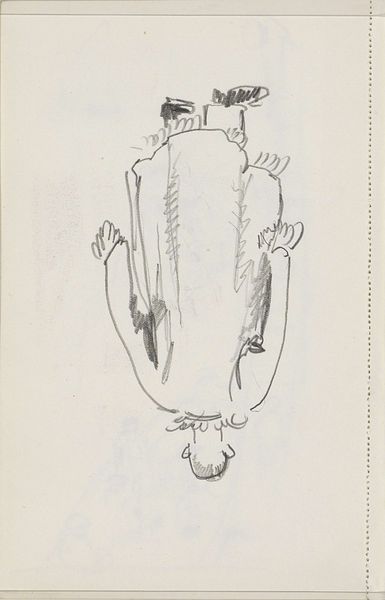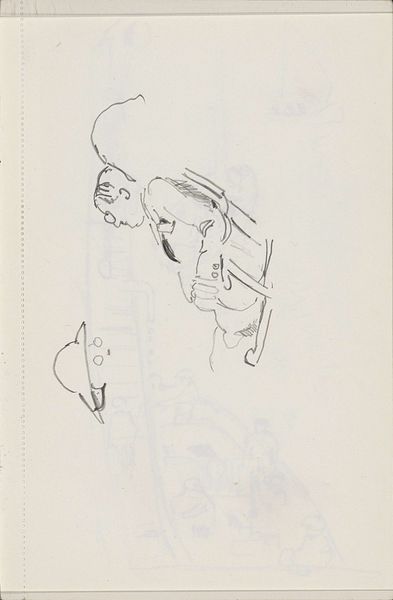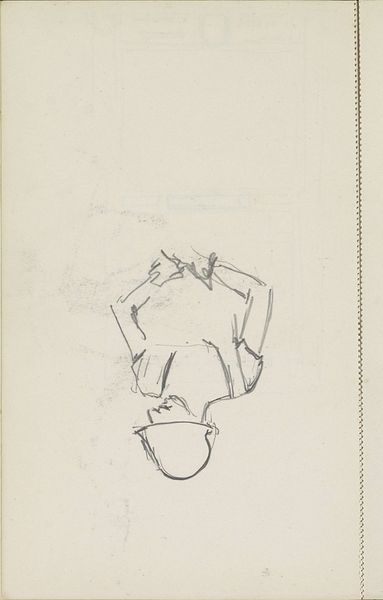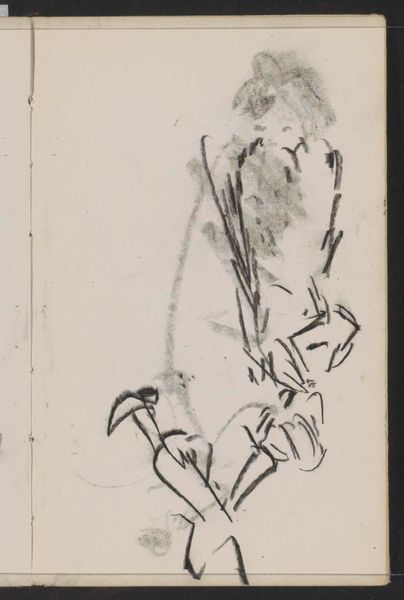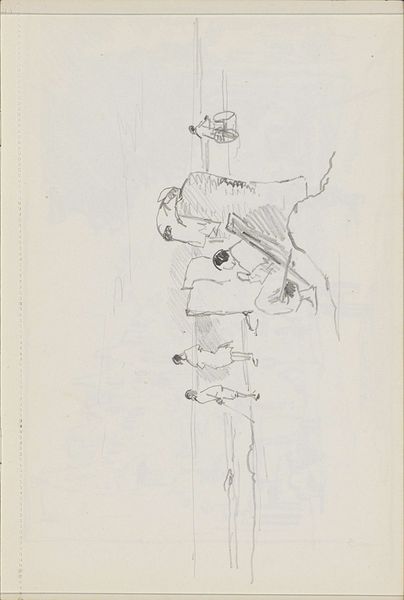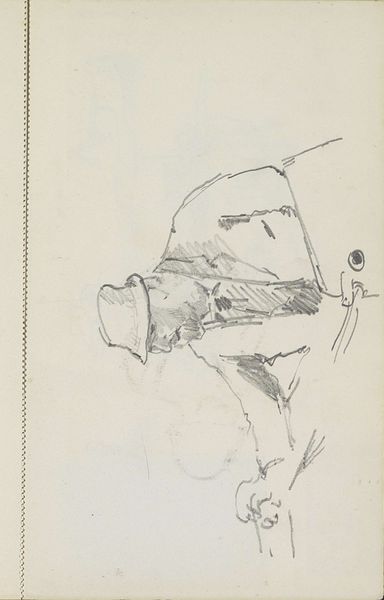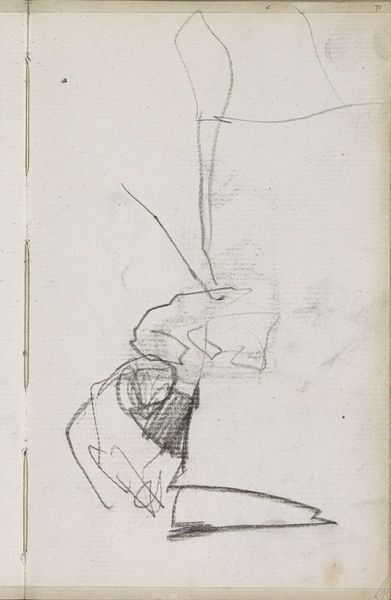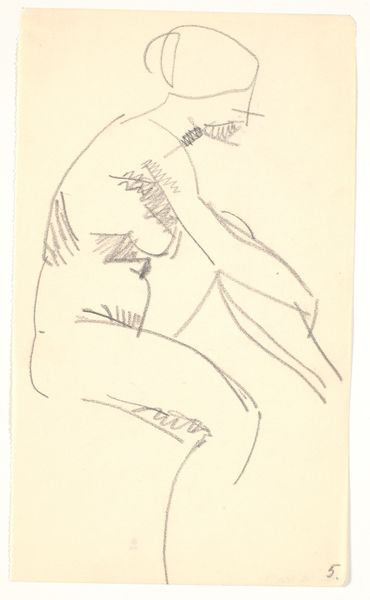
Copyright: Rijks Museum: Open Domain
Editor: This is a quick pencil drawing titled "Man in oosters kostuum," made around 1935-1936 by Cornelis Vreedenburgh. It's part of the Rijksmuseum collection. The sketchiness gives it a spontaneous feel. What symbols or deeper meanings do you see within this seemingly simple portrayal? Curator: The very term "oosters kostuum," or Eastern costume, immediately sparks questions. What does "East" signify in the artist's mind, and perhaps more broadly, within the cultural context of the 1930s? Consider the symbols embedded within clothing. Costumes often carry layers of meaning, revealing status, origin, or aspiration. The impressionistic style suggests an interest not in exact representation, but perhaps in capturing an essence, a mood associated with this "Eastern" figure. Do you sense a specific region being referenced or is it a more generalized exoticism at play? Editor: It feels more generalized, like a romanticized idea of the East rather than a specific place. I wonder if it’s about identity or even escapism during that time? Curator: Exactly. Think about the 1930s: economic depression, rising political tensions. The "oriental" figure might represent an escape from everyday anxieties. What visual elements contribute to that feeling of otherness or distance, separating this figure from the viewer’s reality? Editor: Perhaps the vagueness of the sketch itself contributes. The lack of detail makes it seem dreamlike, not fully formed or real. Curator: Precisely. The artist invites us to project our own understanding, and perhaps our own desires and fears, onto this image. The East as a site of fantasy, a place to project longing and cultural memories. It's about cultural memory and the West's perception of the "other." Editor: I never thought about how much cultural baggage even a simple sketch of a costume could carry! Curator: It’s a reminder that images are never neutral; they are laden with cultural and psychological weight. They speak of historical dynamics and our ongoing process of understanding ourselves in relation to others.
Comments
No comments
Be the first to comment and join the conversation on the ultimate creative platform.
